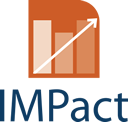| |
Indicators to assess |
Description of the indicator |
Source of the indicator |
| Primary indicators |
Number of service providers |
The number of organisations/companies offering PHS by year since the introduction of the measure |
- For the reasons described above (objective 1), it is not possible to use existing national and European sources to assess the creation of new service providers. Therefore, to collect data on the number of service providers, the public administration in charge of the recognition of PHS companies should collect new administrative data. The data on the number of services providers could be collected at the moment of the recognition. Additional information – e.g. the size of the company – should be collected in the census of companies.
- The professionalisation and quality of the services provided can be roughly estimated according to changing demand for them, which might give information on the satisfaction of the clients. However, additional information must be collected, mostly through surveys among users, to get information about satisfaction with the services. Regarding professionalisation, the share of workers that have taken training courses, etc. could be collected through survey on companies or through information collected via the training providers.
|
| Change in the number of service providers |
The change in the number of organisations/ companies offering PHS by year since the introduction of the measure |
| Secondary indicators |
Type of service providers |
The number of organisations/ companies offering PHS by year, by type (public, private, self-employed, direct employment) |
| Characteristics of the service providers |
The number of organisations/ companies offering PHS by year, by profile characteristics:
- The size (number of workers)
|
| Quality of the services provided |
The satisfaction of users with regard to services provided |
| Professionalisation |
The proportion of workers that have taken training. |






